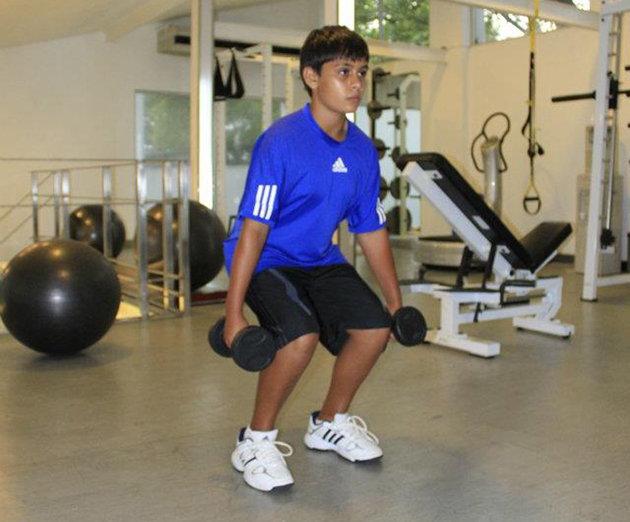Some people think that it is insane to do something without feeling any pain. They think that in order to get the best results, one should go through a lot of pain.
However, this is not true. There are many ways to get the best results without going through all that pain. For example, if you want to lose weight, you don’t have to starve yourself and go on a diet for months and months without seeing any progress. With the help of a professional, all you have to do to reach your goal is eat well and start working out regularly.
Training under the principle of “No Pain, No Gain” is counterproductive and will do more harm than good. Since the 1990s, many have stopped saying that people need to do hard, painful workouts to get the best results, which is just not true! In fact, you should think about how good it is for your body to learn how to train smarter, not necessarily harder, and with less pain. Sad to say, even trained professionals in many countries still follow the common practice of training harder but not smarter. This has a negative mental and physical impact on many young athletes, both elite and general clients. It is not sustainable. “I am a believer that the athletes should train smarter, not harder.”- Dr. Ryan Carey
Athletes are constantly pushing themselves to the limit. They often don’t give themselves time to recover from their workouts, which leave them physically and mentally exhausted. This can lead to serious illnesses and injuries that can hurt young athletes physically, mentally, and emotionally. While pushing oneself is important, it is also critical that an athlete take time to recover in order to progress with training.
In the high-pressure world of competitive sports, it is important for athletes to know how much they can push themselves to be their best. It is also important for athletes to know when to stop and recover from injuries.
Are your children safe?
Many of the student athletes who play sports at school are between the ages of 9 and 18. After completing their studies, only a few will continue sports as a profession. During this important time of growing up, from childhood to adolescence, kids need consistent parental support and good supervision in sports and other physical activities to avoid injuries and do better in sports.
Children are still developing their bodies and minds during this critical time of growth. Sports and other physical activities can help them improve their motor skills and make them feel good about themselves. But it’s important to have the right kind of supervision to keep your child safe.
Parents are concerned with the safety of their children when they are not around. But now, with the help of family cameras, they can track their children’s location and everything they do. This is a great way to make sure your child is safe while you’re not around.
Remote monitoring is also a great way to reinforce good behavior.
How many of your kids are playing a single sport? Parents and athletic coaches often make the common mistake of over-focusing on a certain (sports-specific) muscle group.
The idea of a “sports-specific” muscle group is a myth. All muscles in the body are used when playing any sport, so the goal should be to work them all out and not just certain groups. We have the concept of LTAD (long-term athletic development) as juniors, which we will discuss in a future blog.
Here’s a quick overview of LTAD. Long-term athletic development is a process that assists athletes in improving their skills from infancy to adolescence in order to achieve peak performance in their sport. On the contrary when we train elite athlete we use advance specific high performance training and methodology
In this day and age, most people are looking for training shortcuts to get the best results in the shortest time. Because of this, there has been a big rise in injuries and athlete burnout.
When you participate in a single sport, overusing the same muscles over and over again can lead to unnecessary and repeated injuries over time.
Studies show that single-sport athletes are at a higher risk for injuries. When you have a single sport, such as running, tennis, etc., the same muscles are constantly used.
When a muscle is constantly used without having time to rest, it can become injured. The cause of this injury is usually inflammation. Inflammation occurs when the muscle becomes irritated or swollen. This reaction can happen due to an injury, strain, overuse, or poor posture. Try not to enroll your kids in just one sport, you should be encouraging them to participate in a variety of sports and physical activities. Research shows that children who engage in a variety of different sports have better hand-eye coordination, are more flexible, and are less likely to suffer from injuries than those who focus on just one sport.
If you can’t afford to let your kids play multiple sports, make sure they at least have time for a daily routine of physical activity. Even if it’s just going for a walk around the block with them, you’ll be doing them (and their bodies) good.
When it comes to physical activity, there’s no such thing as too much. A study by the Centers for Disease Control and Prevention found that “participating in both aerobic and muscle-strengthening activities, even for just 10 minutes per day, can make a difference. For example, children who participate in aerobic activity at least once a day have better physical fitness than those who don’t.”
The physical and mental benefits of sports are undeniable. From exercise and fitness to improved brain function, sports have many positive effects. A recent study by the American Academy of Pediatrics showed that kids who did more than one sport or physical activity were more likely to keep their weight the same or even lose weight than kids who only did one sport or activity.
Unfortunately, though, not everyone is meant to participate in a high-intensity sport. Injuries happen, and sometimes those injuries are permanent. Most importantly, sports can cause concussions and other serious neck and brain injuries that make it impossible to play. But the question is, what would happen if the average person participated in a high-intensity sport like American football, rugby, or combat sports ?
Please note the list below of common mistakes often made by coaches and trainers:
- Requiring their athletes to commit to playing a single sport for the whole year instead of a single seasonal sport. This way, different skills and muscle groups can be strengthened over the course of a year instead of only stressing certain muscle groups, which can lead to muscle strains and injuries. over the course of a season or annually football and basketball , swimming, volleyball, soccer, tennis
- Not allowing children enough rest in between and during practice sessions, and physically pushing them on a par with adults
- Children are not getting enough sleep between and during practice sessions, and adults are pushing them physically to the same level as adults.
- Attempting to apply complex athletic fitness training models to children that are more appropriate for professional adult athletes. is not only counterproductive, but will potentially cause harm.
- Ignoring signs of injury and providing adequate rest and recovery time to enable the healing of any injuries, as well as not allowing time for appropriate physical therapy and rehabilitation, before allowing the athlete to resume 100% of all prior physical activities.
- Over-representing or misrepresenting an instructor’s professional expertise and abilities without adequate professional fitness and coaching credentials and training.
- Not utilizing the complementary supplemental professional expertise of other respective health, fitness, and/or medical experts to best serve the trainee (i.e., not making, where needed, appropriate referrals to other professional experts such as an orthopedic doctor, sports psychologist, dietitian, strength and conditioning coach, and/or a physiotherapist, etc. .)
- making, where needed, appropriate referrals to other professional experts such as an orthopedic doctor, sports psychologist, dietitian, strength and conditioning coach, and/or a physiotherapist, etc.)
- Not providing accurate and timely responses for the trainee’s pressing questions about the prescribed training regimen (e.g., when does my first workout session occur? When will I know if my fitness is plateauing or if I need to adjust certain exercises or load parameters?)not there are no specific markers or signs that you need to change your training regimen.
If you think your child has any of the following signs, you should talk to a doctor before letting him or her do any more physical activities. The following are warning signs of overtraining and stress during or after sports or physical activities:
- Pain, swelling, or redness in any part of the body
- Localized tenderness, loss of function, hemorrhage
- Pale skin
- A state of disorientation, confusion, or inability to concentrate, as well as anger and/or depression, as any of these symptoms may indicate a concussion.
- Mild fever, headache, abdominal pain, and/or vomiting
- Moist or sweaty skin
- The body is shivering.
- Loss of coordination, muscle stiffness
- Loss of appetite
- Lethargy, weakness, muscle spasm
- Hyperventilation
- Double vision, hunger
- Nausea, shortness of breath, wheeze, cough
- Making excuses not to attend the practice session
Cues for Parents to Take Action:
- Discuss with your child his or her sports’ interests, and together you should select 2-3 sports of his or her choosing.
- Try to vary your child’s participation by having him change his sports activity every few months.
- Work with your child to select a sports coach or physical trainer with whom he or she would most enjoy working, which would keep him or her interested in continuing his or her participation.
- Have a qualified strength and conditioning coach do a health and fitness evaluation on your child. They will look at his or her health and medical history, range of motion, muscle imbalances, cardio-vascular fitness, and strength. They may also do a sports-specific assessment to help your child set fitness goals that match his or her interests.
- If you need to, talk to a qualified dietician about the best way to eat to reach your future fitness and sports-specific goals.
- Where appropriate, consult with an appropriate sports medicine doctor and/or physiotherapist to ensure suitable medical guidance, either as a result of prior injuries and/or for any sports-specific goals.
If any of the above concerns come up, it is best for your child’s immediate and long-term health and fitness to talk to the fitness, health, and/or medical professionals listed above.
So, your child’s chosen sports and/or other physical activities can continue to be fun, challenging, and competitive in the most positive and healthy way possible, reducing his or her risk of injury and unnecessary psychological stress, allowing for optimal physical growth and muscle strength, better eating habits, and a faster recovery from any kind of injury.
I hope this article has been helpful.


